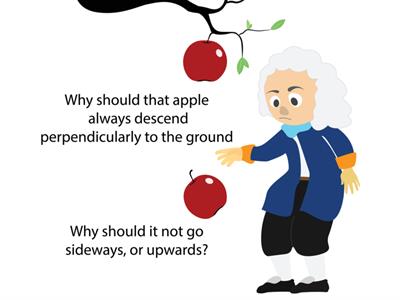PDF chapter test TRY NOW
We have learnt that the earth pulls objects towards it. It happens due to the gravitational force. Whenever an object is made to fall under the influence of gravity alone, the body is said to be moving under free fall.

An apple falls from the tree.
Is there any change in the velocity when the object is falling under the influence of gravity?
The direction of movement of the objects does not change as they fall. However, the magnitude of the object's speed will change due to the earth's attraction. Any change in speed or velocity there involves acceleration. Whenever an object falls towards the earth, and acceleration is involved. Earth’s gravitational force provides this acceleration. Therefore, this acceleration is also called acceleration due to the gravitational force of the earth (acceleration due to gravity). It is denoted by the letter \(g\). The unit of \(g\) is . We know from the second law of motion that the force acting on a body is the product of mass and acceleration. We already learnt that there is acceleration involved in falling objects due to the gravitational force denoted by \(g\). Therefore the letter a is replaced by the letter \(g\). Thus, the magnitude of the gravitational force \(F\) is given by,
By universal law of gravitation,
By comparing equations \(1\) and \(2\), we get
The earth is not a whole sphere. As the radius of the earth rises from the poles to the equator, the value of g becomes higher at the poles than at the equator. For most of the calculations, we consider \(g\) to be more or less constant on or near the earth. But for the objects far from the earth, the acceleration due to the gravitational force of the earth is given by
By applying known values in the above equation, we get
